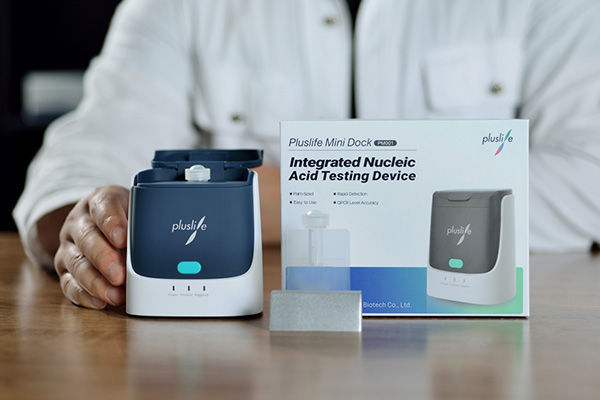The Rise of Portable Veterinary Diagnostic Equipment in Modern Animal Care Leave a comment
The field of veterinary medicine has made significant strides in technology, particularly in diagnostic equipment. As animal care continues to evolve, the demand for efficient, portable, and accurate diagnostic tools has surged. The introduction of portable veterinary diagnostic equipment is revolutionizing how veterinarians diagnose and treat animals, leading to improved health outcomes across various species.
This article explores the advantages, current trends, and future advancements in portable diagnostic tools, highlighting how they enhance the quality of animal care.
Advantages of Portable Veterinary Diagnostic Equipment
Portable diagnostic devices offer numerous benefits over traditional diagnostic methods. Here are a few critical advantages:
Increased Mobility
Portable equipment allows veterinarians to conduct examinations in various locations, such as farms, shelters, and even clients’ homes. This mobility reduces the stress caused to animals during transportation and makes it easier for veterinarians to provide prompt care. According to a source from E.I. Medical Imaging, “this includes increased mobility, allowing examinations in various locations.”
Real-Time Diagnosis
These devices enable real-time diagnostic capabilities, which expedite treatment decisions. Being able to obtain results on-site means that veterinarians can make timely interventions, which is crucial in emergency situations. Quick access to diagnostic information translates into better care for animals.
Ease of Use and Image Quality
Modern portable ultrasound machines, such as the Clarius system, are designed to be user-friendly while maintaining high-quality imaging. They are “incredibly affordable,” making them accessible without compromising the diagnostic process.
Enhanced Diagnostic Capabilities
Portable diagnostic tools improve the speed and quality of care that veterinarians provide. They allow for quick, accurate assessments on-site rather than relying on potentially delayed results from centralized labs. This is particularly crucial in emergency scenarios or in remote areas where traditional equipment may not be available.
Cost-Effectiveness
By minimizing the need for animal transport, portable equipment can help veterinarians reduce overall costs associated with care. As these devices become more integrated into practices, they contribute to doing more for less in terms of both time and expenses.
Trends Influencing Development
Several key trends currently shape the evolution of portable veterinary diagnostic equipment:
Demand for Lightweight, Battery-Operated Devices
Veterinarians increasingly favor lightweight, battery-operated devices that can be utilized in various environments. An example is GE HealthCare’s Vscan Air handheld ultrasound system, which provides quick diagnostics without requiring sedation.
Integration of IoT and Real-Time Data
The Internet of Things (IoT) has found its way into veterinary diagnostics, facilitating real-time health monitoring and data collection. This enhances clinical decision-making and provides veterinarians with invaluable real-time information regarding animal health.
Focus on Affordability
Manufacturers are prioritizing the development of more affordable diagnostic tools to make veterinary care accessible to a broader range of practitioners. This trend is critical for veterinarians working in remote or resource-limited settings.
Growing Pet Ownership
The rise in pet ownership globally has prompted an increased concern about pet well-being, leading to a greater demand for effective diagnostic solutions. This pressure has encouraged manufacturers to innovate and improve diagnostic tools.
Examples of Available Portable Equipment
Several portable veterinary diagnostic devices currently available showcase the advances in this field:
- Clarius Vet HD3 Wireless Scanner: Offers high-definition imaging with AI-powered features and is compatible with both iOS and Android devices.
- Heska Element POC: A handheld blood gas and electrolyte analyzer that provides rapid results from a single test card, well-suited for various settings.
- PT50C Color Doppler Ultrasound: A compact machine designed for multiple animal types, featuring advanced imaging technology for field use.
- iQ+ Vet by Butterfly Network: A durable handheld imaging device leveraging ultrasound technology for multi-species diagnostics.
- Vscan Air: A Bluetooth-connected handheld ultrasound system that enhances workflow for veterinarians, particularly those dealing with larger animals.
- VetStat Electrolyte and Blood Gas Analyzer: Provides rapid results for electrolytes and blood gases, operable on battery or AC power.
These devices demonstrate how portable veterinary diagnostics facilitate effective and efficient animal care.
The Role of Molecular Diagnostics in Veterinary Medicine
Molecular diagnostics significantly impact veterinary medicine by enabling rapid and sensitive detection of pathogens. Techniques like polymerase chain reaction (PCR) and genomic analysis assist veterinarians in identifying infectious diseases, genetic conditions, and other health issues in animals.
According to a study, “the development of rapid, accurate, and sensitive diagnostic methods for detecting pathogens is the basis for treating, controlling, and eradicating infectious diseases of veterinary importance.” This advancement allows veterinary professionals to make informed treatment decisions quickly, improving disease control and overall animal health.
Regulatory Standards for Portable Equipment
Regulatory standards for portable veterinary diagnostic equipment are primarily overseen by the FDA. The FDA does not require pre-market approval unless the equipment emits radiation. Manufacturers must ensure that devices are safe, effective, and labeled properly. Hence, ongoing communication and compliance with regulations are crucial for their adoption in veterinary practices.
Key Features Veterinarians Look For
When selecting diagnostic equipment, veterinarians prioritize several key features:
- Image Quality: High-resolution images are essential for accurate diagnoses.
- Ease of Use: An intuitive interface helps veterinarians operate equipment efficiently.
- Portability: Lightweight and compact designs enhance usability in diverse settings.
- Durability and Maintenance: Equipment must withstand the rigors of veterinary work and remain easy to clean.
- Advanced Imaging Options: Comprehensive diagnostic capabilities are invaluable for varied conditions.
- Cost-Effectiveness: Many veterinarians operate on tight budgets and seek affordable solutions.
- Connectivity: Features that allow for data transfer and integration with existing systems improve workflow.
Future Advancements in Portable Veterinary Diagnostics
The future of portable veterinary diagnostic equipment looks promising, with several anticipated advancements:
Increased Use of Rapid Diagnostic Methods
There is a strong impetus for portable, rapid, and sensitive tests to improve the detection and treatment of animal diseases. Innovations in PCR and genomic testing are expected to become more prevalent.
Applications of Nanotechnology
Nanotechnology is anticipated to play a crucial role in further miniaturizing diagnostic devices, enhancing sensitivity, and reducing costs. This could lead to the development of point-of-care analyzers that are more accessible to practitioners in various settings.
Evolution of Handheld Ultrasound Systems
The ongoing development of devices like the Vscan Air signifies a trend toward more portable imaging solutions. Wireless, battery-operated systems capable of providing instant imaging will greatly enhance the capacity of veterinarians in the field.
Conclusion
The rise of portable veterinary diagnostic equipment marks a transformative phase in animal care. Enhanced mobility, real-time diagnostics, and an increasing focus on accessibility are reshaping how veterinarians manage animal health. The integration of advanced technologies and changing market demands will foster continued evolution and improvement of these devices. By embracing portable diagnostic tools, veterinary professionals can provide enhanced care that improves outcomes for their patients.
At Cost Plus Medical Technologies, we recognize the importance of these advancements. Our Pluslife Mini Dock, a state-of-the-art molecular testing device, exemplifies the future of portable diagnostics in veterinary medicine. With exceptional sensitivity, specificity, and user-friendly operations, it meets the needs for rapid diagnosis and effective disease management in animal care. Check out the Pluslife Mini Dock for quick and reliable testing solutions integrating seamlessly into modern veterinary practices.



